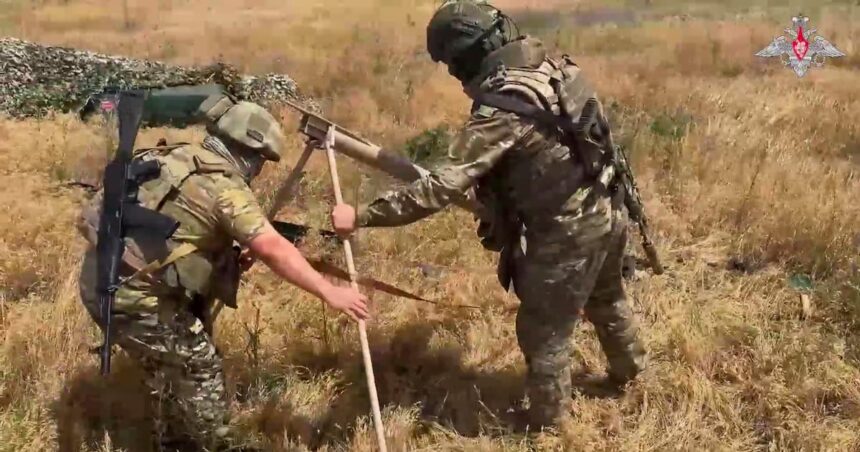The skies darkened over Kyiv yesterday morning as air raid sirens wailed across the capital. Standing on my hotel balcony, I counted six distinct explosions within a 30-minute window. Below me, civilians rushed toward metro stations doubling as bomb shelters—a routine they’ve painfully perfected over 22 months of war.
What unfolded across Ukraine on December 29 marked what Ukrainian officials are calling the largest aerial assault since Russia’s full-scale invasion began. The attack involved approximately 158 missiles and drones targeting civilian infrastructure in at least 10 regions, according to Ukraine’s Air Force Commander Mykola Oleshchuk.
“Nothing like this has been seen before—not in scale, not in combination of weapons,” Andriy Yermak, head of the Ukrainian presidential office, told me via secure messaging hours after the attack. “They deliberately aimed at our energy grid during winter conditions.”
The assault killed at least 31 people and wounded over 160 others. In Kyiv, a children’s hospital sustained damage, though miraculously without casualties among the young patients. Residential buildings across multiple cities were reduced to rubble.
Ukrainian air defenses managed to intercept 114 of the 158 incoming projectiles—an impressive 72% success rate, but cold comfort to those in neighborhoods where the remaining missiles found their targets.
In Dnipro, local resident Maryna Kovalenko described the morning: “We heard the first explosion around 6:30. By the third one, our windows shattered. This feels different than previous attacks—more intense, more frightening.”
The bombardment employed Russia’s strategic air force including Tu-95 bombers launching cruise missiles from the Caspian Sea region, alongside hypersonic Kinzhal missiles fired from MiG-31K fighters. Ukrainian intelligence sources tell me this represents almost Russia’s entire arsenal of precision strike capabilities deployed in a single coordinated assault.
Why now? Military analysts point to several strategic calculations behind the massive strike.
“This attack serves multiple purposes for Moscow,” explains Dr. Olena Tregub, Secretary General of NAKO, an independent defense anti-corruption organization in Ukraine. “It degrades civilian morale during winter, tests Western air defense capabilities, and diverts attention from Russia’s continued struggles in eastern ground operations.”
The timing also corresponds with Ukraine’s increasingly successful drone strikes on Russian military infrastructure and oil refineries, including a bold attack on Feodosia in occupied Crimea that destroyed a Russian landing ship carrying Iranian-made Shahed drones.
The devastating barrage comes as Western aid remains stalled in both Washington and Brussels. A crucial $61 billion military assistance package for Ukraine sits deadlocked in the U.S. Congress, while Hungarian Prime Minister Viktor Orban has complicated European Union support efforts.
“The Russians are taking advantage of perceived Western hesitation,” a senior NATO official told me on condition of anonymity. “They’re calculating that without immediate resupply, Ukraine’s air defense capabilities will gradually degrade, opening the door for more attacks like this one.”
Ukrainian President Volodymyr Zelenskyy responded forcefully, calling for allies to lift restrictions on long-range strikes against military targets inside Russia. “The rules of war have changed,” he stated in an evening address. “We need the capability to destroy launch sites before missiles are fired.”
The humanitarian impact extends beyond the immediate casualties. Power outages affected approximately 40% of the country following the strikes, according to Ukraine’s energy ministry. In Lviv, historically spared the worst of the bombardment, three power substations were destroyed.
“We’re already seeing hospitals switching to generator power,” says Oleksandra Matviichuk, head of the Center for Civil Liberties and 2022 Nobel Peace Prize winner. “People with disabilities reliant on electric medical equipment are especially vulnerable.”
The attack demonstrates Russia’s evolving tactics. Early warning from Ukrainian intelligence gave civilians critical minutes to seek shelter, potentially saving hundreds of lives. Yet the sheer volume of incoming projectiles overwhelmed even sophisticated Western-supplied defense systems like Patriot batteries.
In Moscow, officials offered contradictory justifications. The Russian Defense Ministry claimed they targeted “military-industrial facilities,” while diplomatic channels portrayed it as retaliation for Ukrainian strikes on Russian territory. Neither explanation addresses the predominantly civilian nature of the casualties.
International reaction came swiftly. U.S. President Joe Biden condemned the “brutal” attack, while NATO Secretary General Mark Rutte called it “a stark reminder of Russia’s continued disregard for human life.”
As night fell over Kyiv, emergency crews worked by floodlight to restore critical services. In a damaged apartment building in the Podil district, I watched as volunteers distributed blankets and hot tea to displaced residents huddled in a school gymnasium.
“We’ll rebuild again,” said Oleksandr, a 67-year-old engineer assisting with emergency repairs. “But we need our partners to understand—this isn’t just about Ukraine. Each missile that falls here tests the limits of what will be tolerated in tomorrow’s world.”
For Ukraine, the devastating assault underscores the urgency of securing additional air defense systems. The country’s strategic reserves of interceptor missiles are reportedly reaching critically low levels. Without replenishment, similar attacks in coming weeks could prove even more catastrophic.
As dawn breaks on a new day in Ukraine, the question hanging over the country isn’t if another massive strike will come, but when—and whether their international partners will deliver the means to defend against it before it’s too late.






